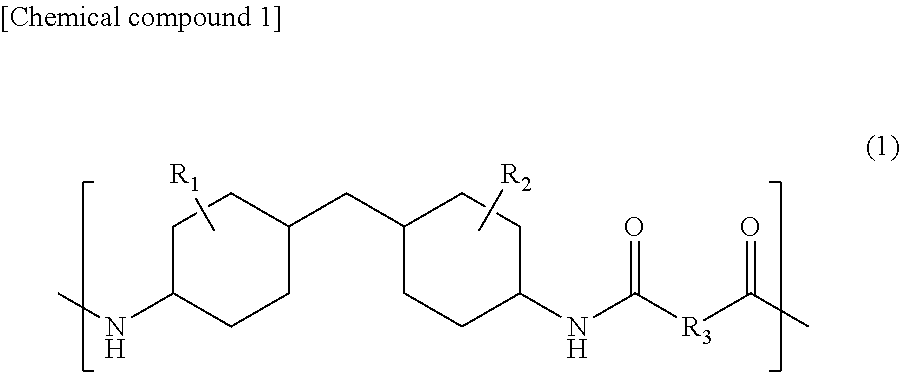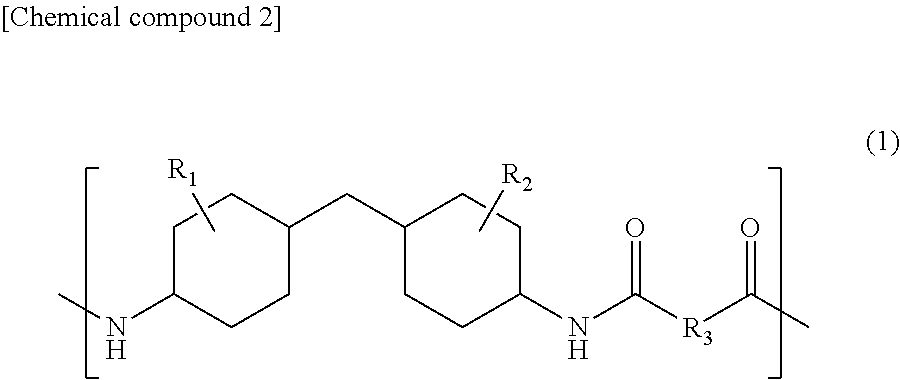Epoxy resin composition for fiber-reinforced composite materials, prepreg, and fiber-reinforced composite material
a technology of epoxy resin and composite materials, applied in the field of epoxy resin composition for fiber-reinforced composite materials, prepreg, fiber-reinforced composite materials, can solve the problems of inability to drastically improve the strength of reinforcement fiber layers, interlaminar toughness, and inability to improve drastically, and achieve compressive strength, and high mode ii interlaminar toughness
- Summary
- Abstract
- Description
- Claims
- Application Information
AI Technical Summary
Benefits of technology
Problems solved by technology
Method used
Image
Examples
example 1
[0187]Using a kneader, the procedure specified in section (3) was carried out according to the compounding ratios given in Table 1 to prepare an epoxy resin composition for fiber-reinforced composite material production. For the resulting epoxy resin composition, the procedures specified in section (4) “Measurement of bending elastic modulus of cured resin” and (5) “Measurement of toughness (KIC) of cured resin” to determine its bending elastic modulus and KIC. Elsewhere, the procedure specified in section (6) was carried out to produce a prepreg in which particle 1 was extremely localized near the surface. Using the resulting prepreg, the measurement procedures specified in section (7) “Proportion of particles existing in the region with a depth equal to 20% of the prepreg thickness”, section (8) “Preparation of composite material plate for mode I interlaminar toughness (GIC) test and implementation of GIC measurement”, section (9) “Measurement of mode II interlaminar toughness (GI...
examples 2-10
[0191]Except for using the compounding ratios specified in Table 1, the same procedure as in Example 1 was carried out to provide epoxy resin compositions and prepregs. Particles were localized adequately near the surface and the interlayer thicknesses were adequately large, suggesting that the fiber-reinforced composite materials had satisfactory values of GIC, GIIC and compressive strength under heat and humidity conditions.
PUM
| Property | Measurement | Unit |
|---|---|---|
| glass transition temperature | aaaaa | aaaaa |
| glass transition temperature | aaaaa | aaaaa |
| particle diameter | aaaaa | aaaaa |
Abstract
Description
Claims
Application Information
 Login to View More
Login to View More - R&D
- Intellectual Property
- Life Sciences
- Materials
- Tech Scout
- Unparalleled Data Quality
- Higher Quality Content
- 60% Fewer Hallucinations
Browse by: Latest US Patents, China's latest patents, Technical Efficacy Thesaurus, Application Domain, Technology Topic, Popular Technical Reports.
© 2025 PatSnap. All rights reserved.Legal|Privacy policy|Modern Slavery Act Transparency Statement|Sitemap|About US| Contact US: help@patsnap.com



